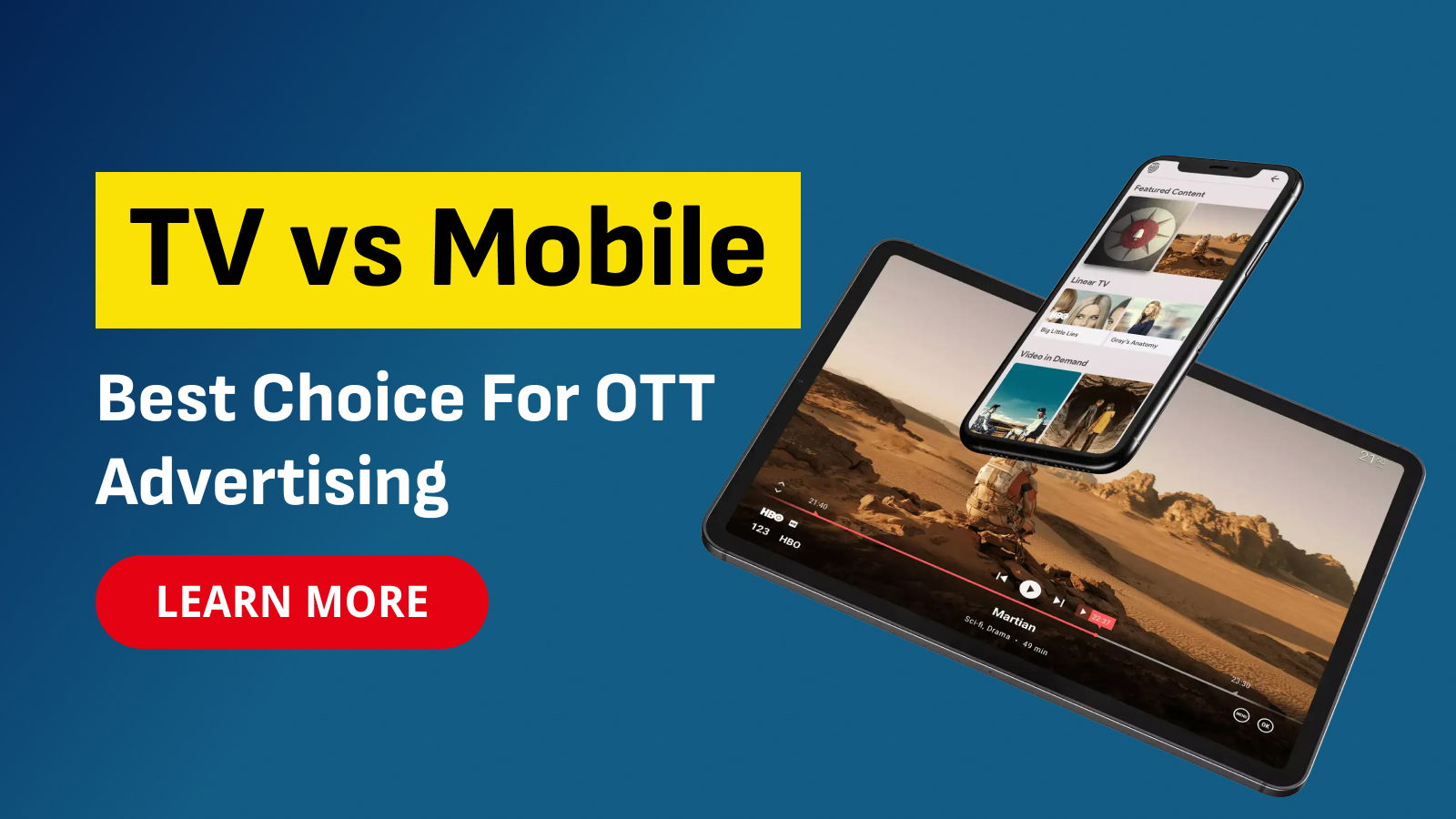Digital media consumption is increasing rapidly and the debate between TV and mobile platforms has gained significant traction among OTT advertisers. Streaming services continue to dominate how audiences consume content, understanding where to invest advertising resources is crucial for maximizing reach and engagement. Vodlix, as a leading white-label OTT solution provider, offers insights into this pivotal question: TV vs Mobile – What Should OTT Advertisers Focus on?
Over-the-top (OTT) platforms have revolutionized how viewers access entertainment, providing a convenient alternative to traditional television. With the proliferation of smart TVs, smartphones, and other connected devices, consumers now have unprecedented control over when, where, and how they watch content. This shift has reshaped advertising strategies, prompting advertisers to rethink their approach to reach target audiences effectively.
Before diving into the TV vs Mobile debate, it's essential to understand the behavior of OTT viewers:
Device Preference: While TV remains a staple in many households, mobile devices offer unparalleled flexibility and personalization. Viewers often choose their device based on context, such as location, time of day, and content type.
Content Consumption Patterns: TV viewership traditionally peaks during prime time, whereas mobile usage is spread throughout the day, including commute times and leisure moments. This divergence influences when and how advertisements are most effective.
Engagement Levels: Mobile devices foster a more interactive experience with touch-based interfaces, enabling direct responses such as clicks and app downloads. On the other hand, TV ads leverage the immersive, large-screen experience to capture attention.
Television has long been synonymous with advertising, and OTT platforms have extended this reach digitally:
Large Screen Impact: TV screens provide a cinematic experience, making ads more captivating and memorable. High-definition visuals and surround sound enhance brand recall and emotional engagement.
Prime Time Dominance: Evening TV viewership spikes during prime time, presenting advertisers with a concentrated audience eager for entertainment. This slot remains coveted for its reach and influence.
Brand Trust and Authority: TV advertising, especially on reputable OTT channels, enhances brand credibility and authority. Viewers often perceive TV ads as more trustworthy compared to digital counterparts.
Mobile devices offer unique advantages that cater to modern consumer preferences and behaviors:
Personalization: Mobile apps can leverage user data to deliver personalized ads based on preferences, location, and past behavior. This targeted approach increases relevance and reduces ad fatigue.
Interactive Features: Touchscreen interfaces allow viewers to engage directly with ads, whether through interactive banners, quizzes, or app downloads. This interactivity drives higher conversion rates and measurable ROI.
As technology continues to advance, OTT advertising landscapes evolve with new trends and considerations:
Cross-Device Consistency: Advertisers must maintain brand consistency across TV and mobile platforms, ensuring seamless transitions and reinforcing messaging effectiveness.
Data-Driven Insights: Leveraging analytics and data-driven insights is critical for optimizing ad spend, identifying audience segments, and refining targeting strategies across devices.
Ad Format Innovation: Experimenting with innovative ad formats, such as interactive overlays, shoppable ads, and dynamic content insertion, can enhance engagement and drive conversions.
In conclusion, the debate between TV and mobile advertising on OTT platforms isn't about choosing one over the other but rather finding the right balance. Each platform offers unique strengths that cater to different aspects of consumer behavior and engagement preferences. Vodlix, with its comprehensive OTT solutions tailored for both TV and mobile apps, empowers advertisers to navigate this dynamic landscape effectively.
By understanding the nuances of TV vs mobile advertising and harnessing the capabilities of both platforms, advertisers can create holistic campaigns that maximize reach, engagement, and ROI. As the digital media ecosystem continues to evolve, staying adaptable and informed will be key to achieving long-term success in OTT advertising.
For more insights on optimizing your OTT advertising strategy across TV and mobile platforms, explore Vodlix's white-label solutions and industry-leading expertise. Contact us today to discover how we can elevate your brand's presence in the competitive world of OTT advertising. Start your 14 Days Free Trial to learn more about our white-labelled OTT solutions and how we can help you navigate the complexities of OTT advertising with confidence.





.png)

